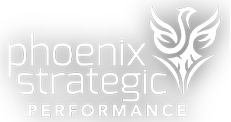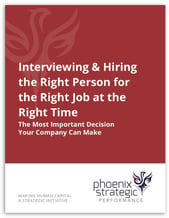The function of human resources (HR) means so many things to different people that, in many cases, there is a resulting identity problem for HR. There are mixed and sometimes unrealistic expectations of the HR function. Over the past decade, HR has attempted to rebrand itself to the point where the terminology is ambiguous! No wonder people outside HR are confused about what HR does. The new word in vogue is Talent – and it describes everything from Talent Management, Talent Acquisition, Talent Development, Talent Success, Talent Engagement, and the list goes on. HR is evolving and going through rebranding at the same time. It is no surprise that the people whom HR serves may be confused about what HR does. HR is now responsible for several functions that didn’t exist when I started working in HR. I remember when HR was the upgraded version of Personnel – but what has changed over the years?
The one change that the recent research does highlight is that the perception and value of HR has changed. The consensus view globally is that HR’s value is in steep decline. How can that be? It may be in the evolving perceptions of HR.
The reality is that the HR function has evolved over the years into two separate functions. Instead of acknowledging this split, HR has rebranded, and to what end? Sadly, I often hear people describe HR as payroll or benefits, and it is, can be, and should be so much more. Every organization creates a unique HR function that comprises some or all of the following two functions. Consider these two evolving functions and think about how HR is structured in your organization:
Function One: HR Compliance (Mandatory)
HR Compliance deals with all the process, legal, and regulatory issues that HR Compliance must manage. There is no choice. The areas include benefits, payroll, attendance, onboarding, recruiting (in some cases), HRIS, and general admin, to name a few. We must acknowledge that something is happening in this space every year that layers more and more work on this HR compliance function. This is the administrative and execution arm of HR that the organization relies upon. It is often perceived as less ‘high profile,’ but to be clear, it is necessary. It is also the function that can be and often is outsourced! And here’s the issue. This HR function is often taken for granted until something goes wrong.
Function Two: Strategic HR (Should be mandatory but is often only partially provided or non-existent)
Strategic HR is the function of HR that aligns with the business. Strategic HR provides human capital insights, from a business perspective, that help the business units they support achieve business goals and initiatives. To be relevant, professionals in this function must have the business acumen to understand the business goals and translate how the present and future human capital capacity can be deployed to reach those goals. At the same time, these HR professionals must ensure that the organization is agile, resilient, and ready to meet the next market opportunity and competitive challenge. Strategic HR must be in every planning meeting and needs to articulate the business case for human capital. Embedded in this role is the ability to anticipate and envision, communicate, influence, negotiate, problem solve, analyze near, mid, and long-term business risk relative to human capital, and thoroughly understand organization development. These HR professionals must be capable of human capital gap analysis, provide relevant and targeted learning and development solutions, and a governance process to ensure accountability at every level. These HR professionals should be able to say no when misguided decisions are made regarding human capital. This is a very different role than the HR Compliance role.
As we consider the two different functions possible within HR, these functions have evolved into two very different but equally essential functions. What does your HR team look like? What function dominates? This HR condition has evolved over many years. It is time to appraise what is happening in your HR world and how other parts of your organization perceive it. It may be time to reset the course of HR in your organization. If you want to see if your organization needs to press the HR reset button, take our complimentary organizational stress test.





